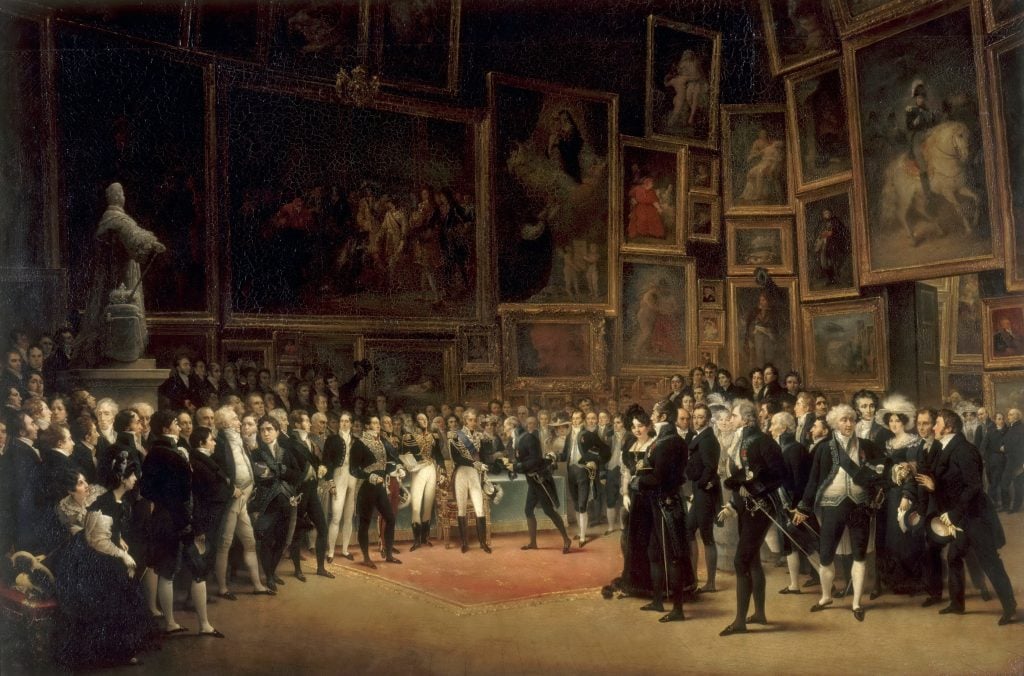 |
| Charles X at the Louvre in 1824 |
In 1648, a nine-year-old Louis XIV backed the formation of the Royal Academy of Painting and of Sculpture at the behest of Charles Le Brun. Its initial function was to produce French artists who could execute royal commissions with nationalist flair—no more shelling out on Flemish or Italian masters. The Salon was a natural outgrowth of this system.
Beginning in 1667, the Academy held sporadic exhibitions, allowing its members to present their talents to potential patrons. After relocating his court to Versailles in 1682, the Sun King designated a section of the Louvre to the Academy. The gatherings became more formalized and frequent in the 1720s after moving into the Salon Carré, the rectangular-shaped room from which the exhibition derives its name.
In 1737, the Salon opened to the public and offered rare access to art in an era before museums. Paintings were selected by a jury of academics based off a strict hierarchy. First came history paintings (think biblical scenes, great battles, classical mythology). Next came portraiture (of royalty, naturally), then genre paintings and landscapes. The lowly still life was last. Every inch of the Salon Carré was filled with paintings arranged in keeping with this hierarchy, a clustered scene that in time became its own painterly subject. Held annually and later biannually, the event fomented intellectual debate and produced art criticism that in time spilled into the country’s newspapers.
Art, however, was not beyond the clutches of the revolutionary spirit that was sweeping France in the latter 1700s and in 1793 the Academy was abolished following Louis XVI’s execution. The Salon switched from royal to governmental supervision and in 1795 was opened to all artists, including those from outside of France. (Read more.)

















No comments:
Post a Comment